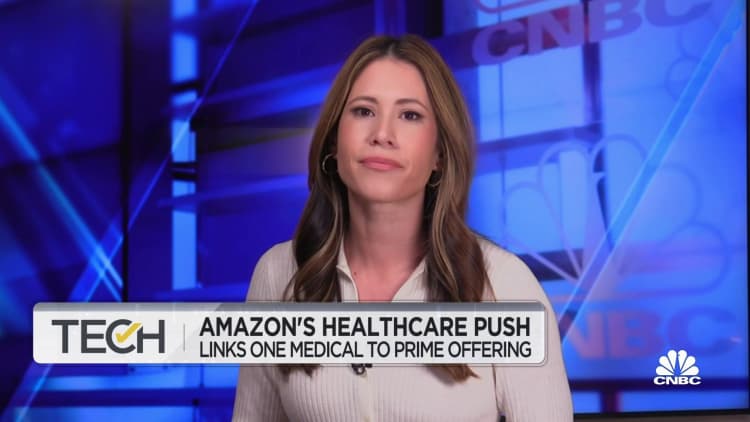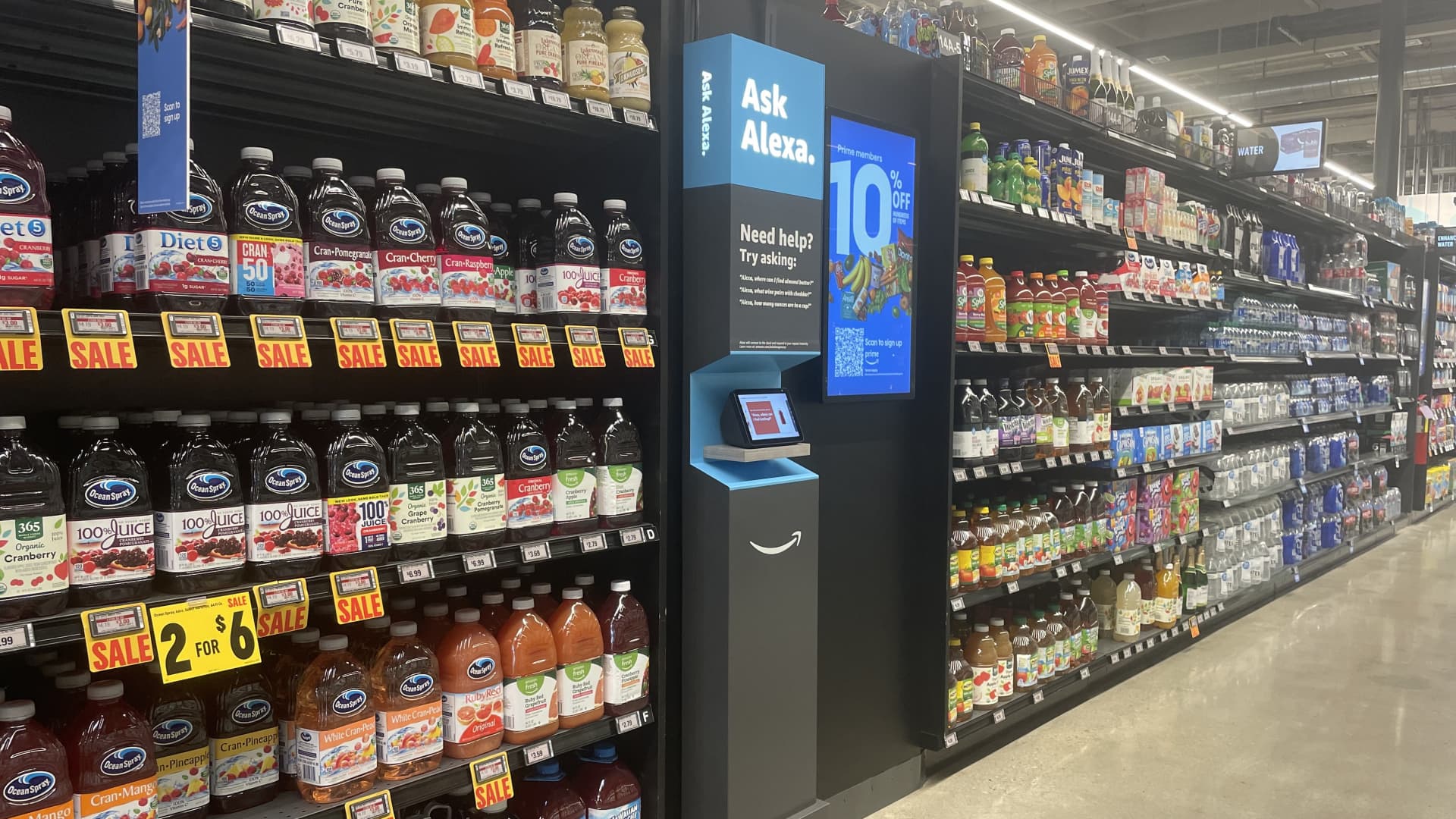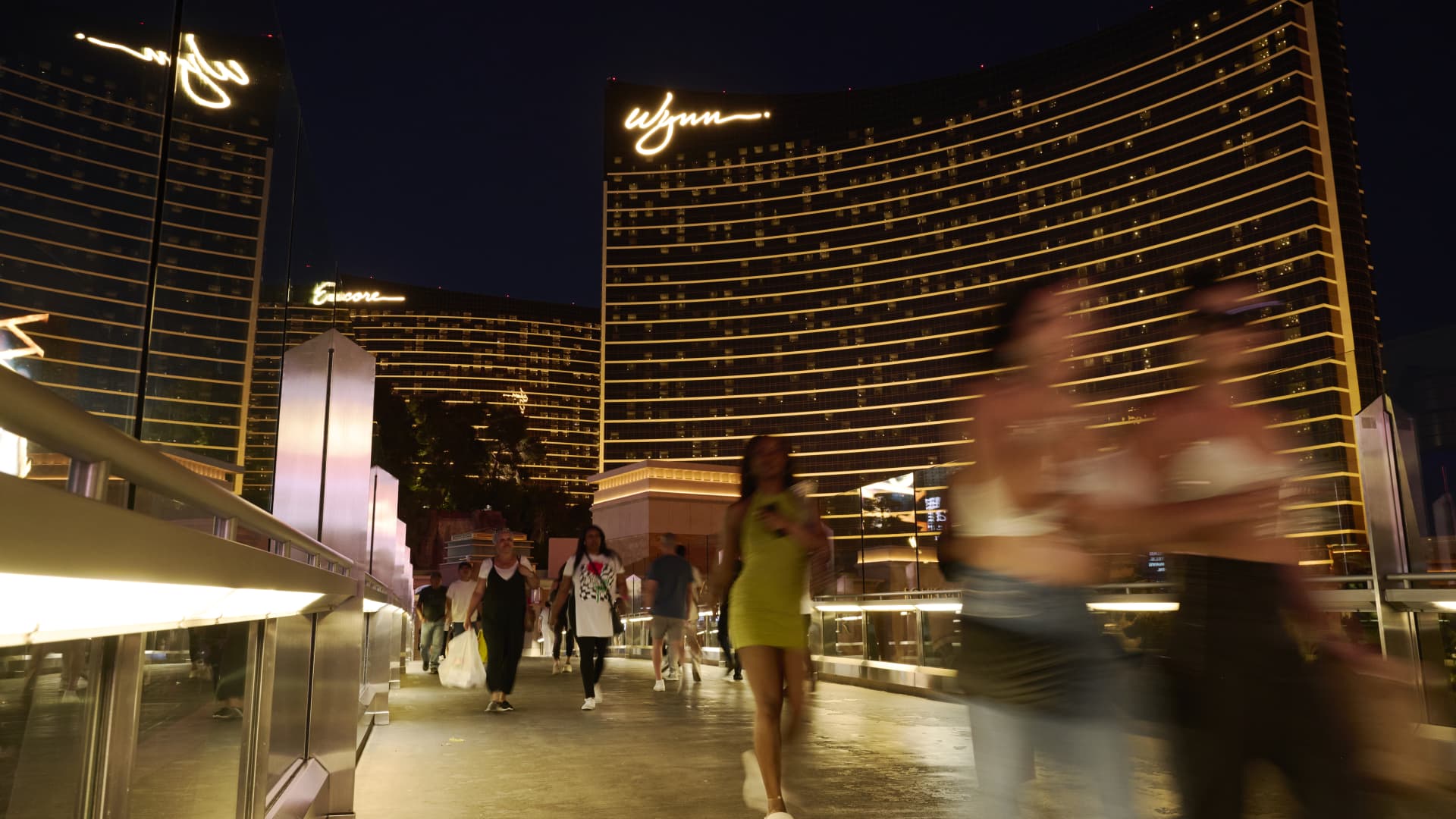[ad_1]
Amazon Fresh store in the Woodland Hills neighborhood of Los Angeles
Annie Palmer
In February, Amazon CEO Andy Jassy said his company was taking a pause on opening new Fresh supermarkets and Go convenience stores, while closing some underperforming locations.
It was all part of a broader belt-tightening campaign at Amazon and seemed to signal a setback in the company’s years-long, billion-dollar foray into brick-and-mortar supermarkets.
But Claire Peters says there is no question of a retreat.
Peters, a 28-year retail industry veteran who last worked as an executive at Australian supermarket giant Woolworths, was hired as vice president of retail at Amazon in February. Peters now oversees Amazon Fresh and reports to ex-Tesco director Tony Hoggett, who heads Amazon’s physical stores.
Peters was in Los Angeles this week for the grand reopening of three Amazon Fresh stores, a brand the company launched during the Covid pandemic to reach a larger mass-market audience than Whole Foods. For the refresh, Amazon added about 3,000 new products to expand its selection after customers heard it was falling short in some categories.
In an interview with CNBC, Peters acknowledged that Amazon “has more work to do” to win over customers, but that its main focus is making the grocery shopping experience more fun and enjoyable for people. She said the company is as committed as ever to capturing its share of the $1.32 trillion U.S. grocery market. Amazon currently ranks second in the online grocery market, trailing only Walmart.
To succeed in a business far removed from its online retail roots, Amazon cannot rely solely on its brand recognition, but must also provide services that give consumers a reason to choose its stores over the competition.
Shoppers check out the sale items while waiting in line for the new Amazon Fresh store to open on E. Colorado Blvd in Pasadena, CA on Thursday, September 15, 2022.
Medianews Group/Los Angeles Daily News Via Getty Images | Media newsgroup | Getty Images
“I’m not naive because people are going to love Amazon,” Peters said at the reopening of the Fresh store in LA’s Woodland Hills neighborhood. The store is located in a former Toys R Us location in a strip mall with a Citibank branch and an Office Depot.
“But do I want them to love us, as in, ‘They take all that pain out of my shopping,’ ‘They must be reading my thoughts,’ ‘Gosh, what a pain to take back my returns after Christmas,'” Peters said. “I want us to get rid of them all, and if there’s one company that can do that, it’s this one.”
As part of Amazon’s broader change in grocery strategy, some key executives were moved to other parts of the company. Dilip Kumar, who previously oversaw physical retail and technology, transitioned to retail technology within Amazon Web Services. And Stephenie Landry, former vice president of the supermarket chain, switched to the sustainability organization.
In addition to the Woodland Hills Fresh store, Amazon also reopened locations in nearby Pasadena and Irvine this week, after redesigning two Fresh stores in the Chicago area in August.
With Thanksgiving just around the corner, Peters gave an example of how stores were limited before the upgrade. Customers could buy a turkey, Peters said, but had trouble finding other key menu items, such as cranberry sauce or pumpkin pie filling.
Some of the new range of products came from the company’s robust portfolio of private label brands. Many of those brands, such as Happy Belly English muffins and Aplenty potato chips, have been sold online by Amazon for years,
The store renovations weren’t just about adding popular items. Amazon had also heard from some customers that the Fresh stores were cold and uninviting, Peters said. That’s why the look and feel was redesigned, with better signage and things like recipe tips for products.
At the Woodland Hills store, the company removed the meat and seafood section in favor of more packaged options based on customer feedback, Peters said. It also added self-checkout lanes and Krispy Kreme donut and coffee stands at the front of the store.
Amazon Fresh store in the Woodland Hills neighborhood of Los Angeles
Annie Palmer
‘Where is the butter?’
Amazon’s groceries have been in the making for years. The company first launched its fresh grocery delivery service in 2007 and then introduced a number of concepts over the next decade, some of which did not survive. The boldest move came in 2017, when founder Jeff Bezos spearheaded the $13.7 billion purchase of Whole Foods. A year later, Amazon launched a series of Go cashierless convenience stores.
On Thursday, Amazon said it is opening its fresh grocery delivery service to everyone in the US, after testing in a handful of cities. Amazon plans to soon expand delivery and free pickup at Whole Foods stores. Delivery fees for non-Prime members range from $7.95 to $13.95 depending on order size.
Amazon has brought parts of its online stores to the Fresh locations. As you walk through the snack aisle in Woodland Hills, there is a digital sign directing shoppers to the crackers section. The sign features the word “Sponsored,” like a display ad on the website, and features a promotion for Annie’s Honey Grahams. Members of Amazon’s $139-a-year Prime loyalty club can now get special discounts on items storewide, after that benefit was limited to certain product categories.
Other uses of Amazon technology include Alexa-powered smart displays, which answer questions like, “Where is the butter?” or “What are the best-selling items in the store?” Shoppers can use Amazon’s tech-enabled Dash Carts to skip the checkout line.
Peters said Amazon is also testing another concept called micro fulfillment centers or micro FCs. The small, automated warehouses carry a range of products from across Amazon’s retail offering and are bolted to a physical store, allowing for faster online order fulfillment and a wider inventory offering.
For now, Peters says, Amazon is focusing more on mastering the basics.
“We have to make sure that we really key in our new credentials because we don’t want customers to think that our steak, our milk, our eggs and all of our very strict food safety standards are placed next to a book in the same distribution center,” she said. “My vision is really the omnichannel vision of how we bring that together.”
WATCH: Amazon links One Medical to Prime offering

Don’t miss these stories from CNBC PRO:







